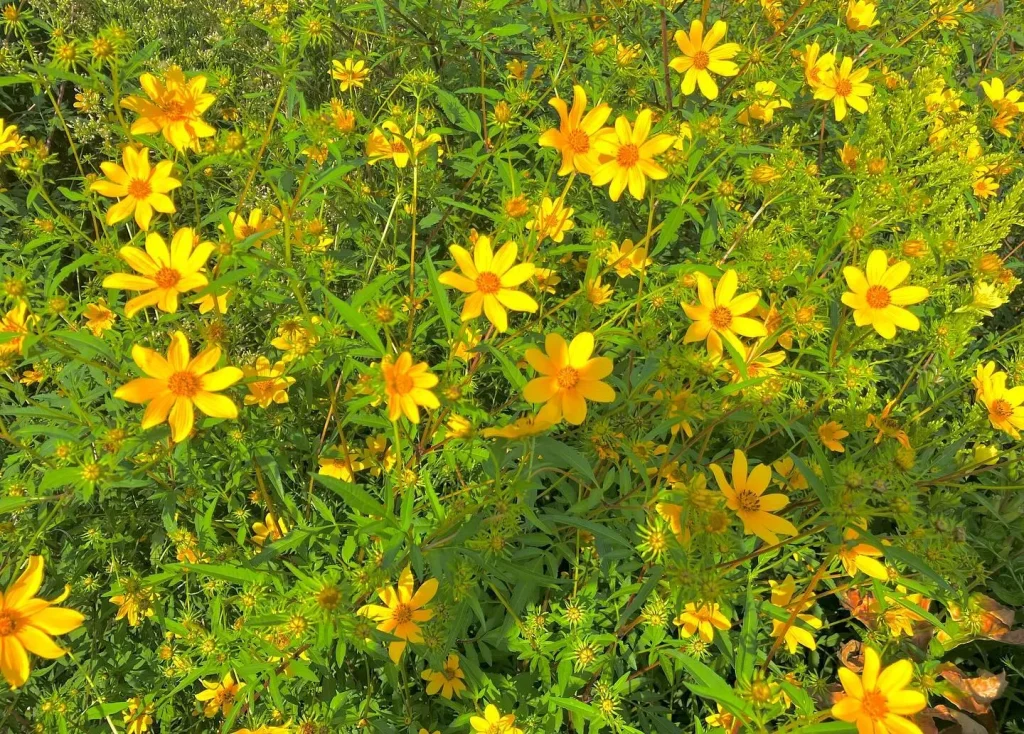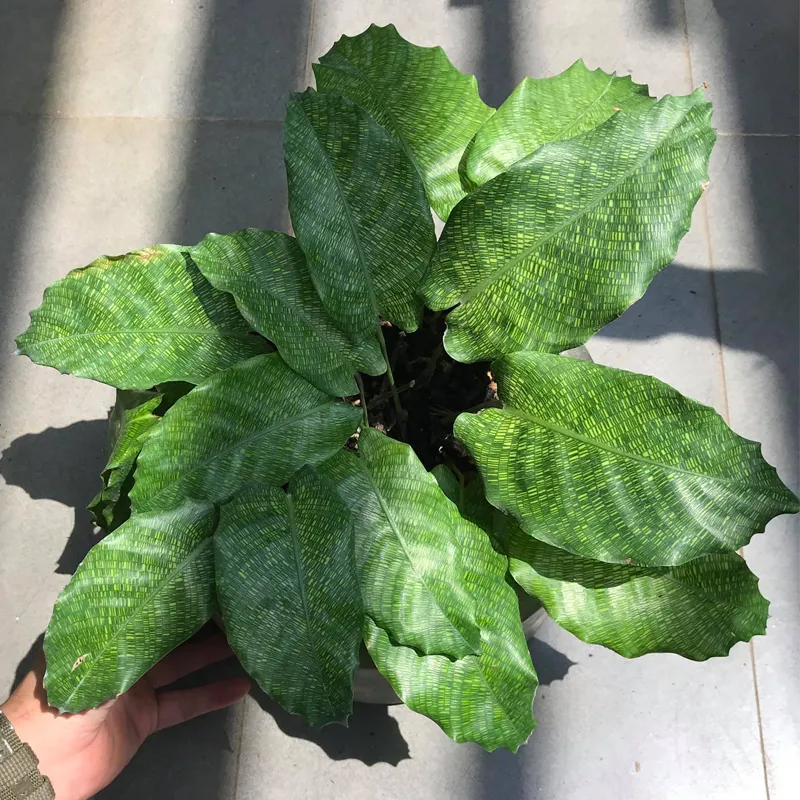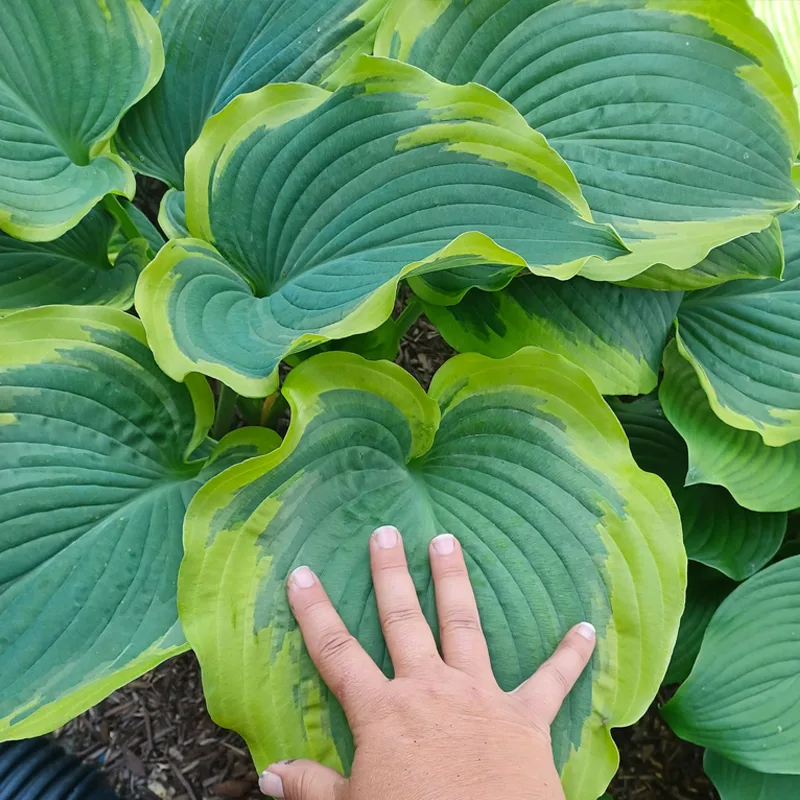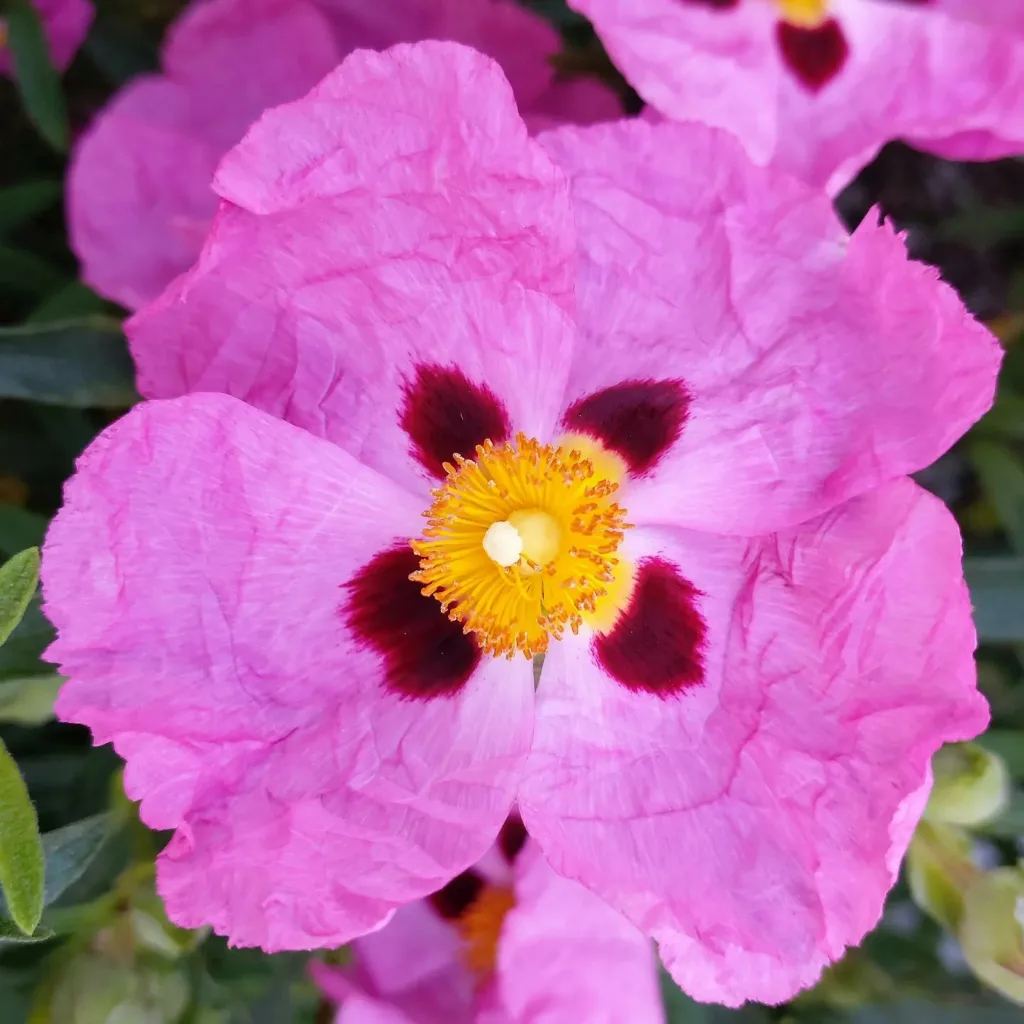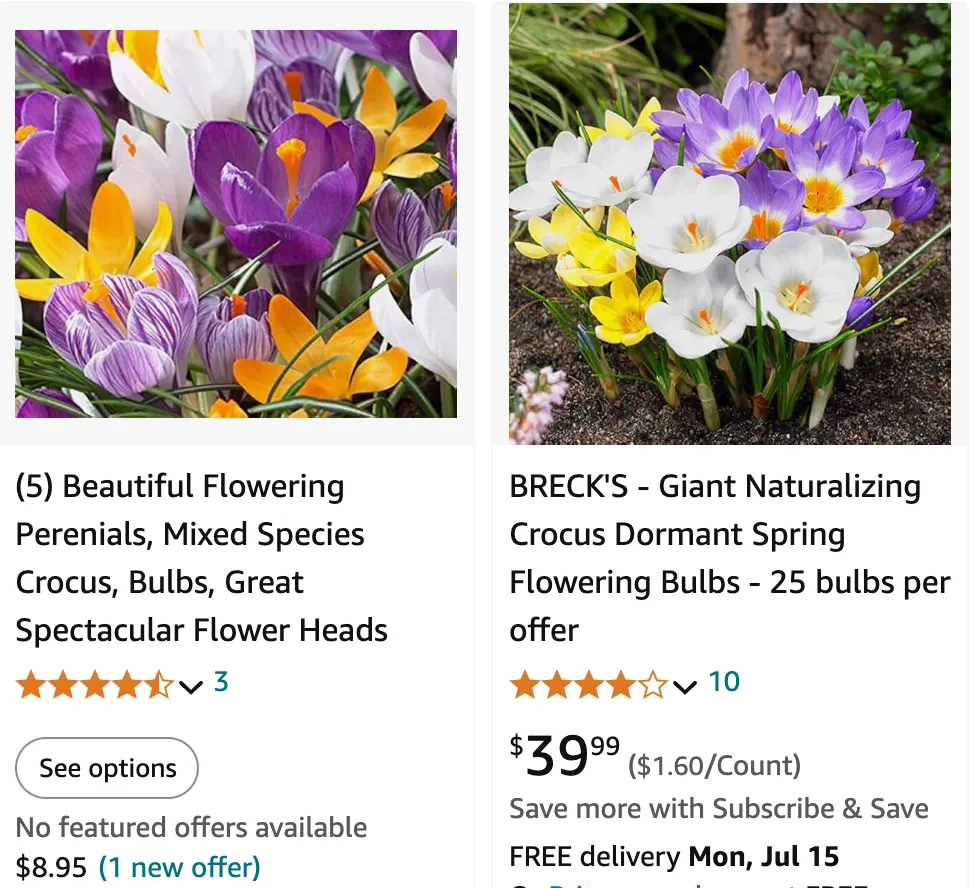
February 5 – Crocus
"The Crocus, a herald of spring, defines February 5."
Crocus symbolizes renewal and awakening. Like this flower, you bring fresh energy and inspiration wherever you go. Your presence signals hope and the promise of new beginnings.
The Enchanting Crocus: A Gardener’s Guide
For years, I’ve been captivated by the sight of crocuses bursting through the cool spring soil. These cheerful blooms, with their delicate petals in vibrant hues, are a true harbinger of warmer days. But as my gardening journey began, I was bombarded with questions. When to plant? How deep do they go? Are they deer-resistant?
This guide is for fellow garden enthusiasts like myself, eager to unlock the secrets of these charming flowers. Let’s delve into the world of crocuses and answer all the burning questions!
What is a Crocus?
Crocuses are delightful members of the Iridaceae family, known for their cup-shaped flowers that appear in early spring. These low-growing perennials come in a variety of colors, including purple, yellow, orange, white, and even bi-colored varieties. Their slender leaves emerge with the blooms, adding a touch of elegance to the garden.
Crocus species
- Crocus abantensis T.Baytop & B.Mathew
- Crocus abracteolus Kernd. & Pasche
- Crocus adami J.Gay
- Crocus adamioides Kernd. & Pasche
- Crocus adanensis T.Baytop & B.Mathew
- Crocus aerius Herb.
- Crocus akdagensis Kernd. & Pasche
- Crocus akkayaensis Kernd. & Pasche
- Crocus alatavicus Regel & Semen.
- Crocus albocoronatus (Kernd.) Kernd., Pasche & Harpke
- Crocus aleppicus Baker
- Crocus alexandri Nicic ex Velen.
- Crocus almehensis C.D.Brickell & B.Mathew
- Crocus ancyrensis (Herb.) Maw
- Crocus angustifolius Weston
- Crocus antalyensioides Rukšāns
- Crocus antalyensis B.Mathew
- Crocus antherotes Kernd. & Pasche
- Crocus archibaldiorum (Rukšāns) Rukšāns
- Crocus arizelus Kernd. & Pasche
- Crocus armeniensis Rukšāns
- Crocus artvinensis (J.Philippow) Grossh.
- Crocus × asturicus Herb.
- Crocus asumaniae B.Mathew & T.Baytop
- Crocus asymmetricus Erol
- Crocus athous Bornm.
- Crocus atrospermus (Kernd. & Pasche) Kernd. & Pasche
- Crocus atticus (Boiss. & Orph.) Orph.
- Crocus autranii Albov
- Crocus autumnalis Mill.
- Crocus azerbaijanicus Dolatyari & Rukšāns
- Crocus baalbekensis Addam & Bou-Hamdan
- Crocus babadagensis Kernd. & Pasche
- Crocus balansae J.Gay ex Maw
- Crocus banaticus J.Gay
- Crocus baytopiorum B.Mathew
- Crocus bertiscensis Raca, Harpke, Shuka & V.Randjel.
- Crocus berytius Kernd. & Pasche
- Crocus beydaglarensis Kernd. & Pasche
- Crocus bifloriformis Kernd. & Pasche
- Crocus biflorus Mill.
- Crocus boissieri Maw
- Crocus boryi J.Gay
- Crocus boulosii Greuter
- Crocus bowlesianus Kernd. & Pasche
- Crocus bozdagensis Rukšāns & Zubov
- Crocus brachyfilus I.Schneid.
- Crocus brickellii Rukšāns
- Crocus bydzowskyanus Rukšāns & Zubov
- Crocus caelestis (Kernd. & Pasche) Kernd., Pasche & Harpke
- Crocus calanthus Kernd. & Pasche
- Crocus cambessedesii J.Gay
- Crocus cancellatus Herb.
- Crocus candidus E.D.Clarke
- Crocus cappadocicus (B.Mathew) Rukšāns
- Crocus caricus (Kernd. & Pasche) Kernd., Pasche & Harpke
- Crocus carpetanus Boiss. & Reut.
- Crocus cartwrightianus Herb.
- Crocus caspius Fisch. & C.A.Mey. ex Hohen.
- Crocus chiaicus Dolatyari & Rukšāns
- Crocus chionophilus Dolatyari & Rukšāns
- Crocus christianii Rukšāns & Zubov
- Crocus chrysanthus (Herb.) Herb.
- Crocus clusii J.Gay
- Crocus cobbii Kernd., Pasche & Harpke
- Crocus coloreus Kernd. & Pasche
- Crocus corsicus Vanucchi
- Crocus crewei Hook.f.
- Crocus cvijicii Košanin
- Crocus cyprius Boiss. & Kotschy
- Crocus dalmaticus Vis.
- Crocus damascenus Herb.
- Crocus danfordiae Maw
- Crocus danubensis Kernd., Pasche, Randjel. & V.Randjel.
- Crocus demirizianus Erol & Can
- Crocus dispathaceus Bowles
- Crocus dolatyarii Rukšāns
- Crocus duncanii Rukšāns
- Crocus duplex Weston
- Crocus etruscus Parl.
- Crocus fauseri Kernd. & Pasche
- Crocus fibroannulatus (Kernd. & Pasche) Kernd., Pasche & Harpke
- Crocus flavus Weston
- Crocus fleischeri J.Gay
- Crocus × fritschii Derganc
- Crocus gargaricus Herb.
- Crocus geghartii Sosn.
- Crocus georgei Rukšāns
- Crocus gilanicus B.Mathew
- Crocus goulimyi Turrill
- Crocus graveolens Boiss. & Reut.
- Crocus gunae Rukšāns
- Crocus hadriaticus Herb.
- Crocus hakkariensis (B.Mathew) Rukšāns
- Crocus hartmannianus Holmboe
- Crocus harveyi Rukšāns
- Crocus haussknechtii (Boiss. & Reut. ex Maw) Boiss.
- Crocus heilbronniorum Erol
- Crocus hellenicus (Rukšāns) Rukšāns
- Crocus hermoneus Kotschy ex Maw
- Crocus heuffelianus Herb.
- Crocus hittiticus T.Baytop & B.Mathew
- Crocus homeri Ruksans
- Crocus × hybridus Petrovič
- Crocus hyemalis Boiss. & C.I.Blanche
- Crocus ibrahimii (Rukšāns) Rukšāns
- Crocus ilgazensis (B.Mathew) Rukšāns
- Crocus ilvensis Peruzzi & Carta
- Crocus imperati Ten.
- Crocus incognitus Kernd. & Pasche
- Crocus inghamii Rukšāns
- Crocus ionopharynx (Kernd. & Pasche) Kernd., Pasche & Harpke
- Crocus iranicus Rukšāns
- Crocus isauricus Siehe ex Bowles
- Crocus istanbulensis (B.Mathew) Rukšāns
- Crocus jablanicensis Randjel. & V.Randjel.
- Crocus jostii Rukšāns & Zubov
- Crocus kangalensis Kernd. & Pasche
- Crocus karamanensis Kernd. & Pasche
- Crocus karduchorum Kotschy ex Maw
- Crocus kartaldagensis Kernd. & Pasche
- Crocus katrancensis Kernd. & Pasche
- Crocus keltepensis Yüzb.
- Crocus kerndorffiorum Pasche
- Crocus kofudagensis Rukšāns
- Crocus korolkowii Maw & Regel
- Crocus kosaninii Pulevic
- Crocus kotschyanus K.Koch
- Crocus kurdistanicus (Maroofi & Assadi) Rukšāns
- Crocus laevigatus Bory & Chaub.
- Crocus lazicus Boiss.
- Crocus leichtlinii (Dewer) Bowles
- Crocus leucostylosus (Kernd. & Pasche) Kernd., Pasche & Harpke
- Crocus ligusticus Mariotti
- Crocus longiflorus Raf.
- Crocus lyciotauricus Kernd. & Pasche
- Crocus lycius (B.Mathew) Rukšāns
- Crocus lydius Kernd. & Pasche
- Crocus macedonicus Rukšāns
- Crocus malatyensis Kernd. & Pasche
- Crocus malyi Vis.
- Crocus marandicus Dolatyari & Rukšāns
- Crocus marasensis Kernd. & Pasche
- Crocus mathewii Kernd. & Pasche
- Crocus mazziaricus Herb.
- Crocus mediotauricus Kernd. & Pasche
- Crocus melantherus Boiss. & Orph. ex Maw
- Crocus mersinensis Kernd. & Pasche
- Crocus michelsonii B.Fedtsch.
- Crocus micranthus Boiss.
- Crocus minimus Redouté
- Crocus minutus Kernd. & Pasche
- Crocus moabiticus Bornm. & Dinsm.
- Crocus mouradi Whittall
- Crocus multicostatus Kernd. & Pasche
- Crocus munzurense Kernd. & Pasche
- Crocus musagecitii Erol & Yıldırım
- Crocus mysius Kernd. & Pasche
- Crocus naqabensis Al-Eisawi & Kiswani
- Crocus neapolitanus (Ker Gawl.) Loisel.
- Crocus neglectus Peruzzi & Carta
- Crocus nerimaniae Yüzb.
- Crocus nevadensis Amo & Campo
- Crocus nivalis Bory & Chaub.
- Crocus niveus Bowles
- Crocus novicii V.Randjel. & Miljkovic
- Crocus nubigena Herb.
- Crocus nudiflorus Sm.
- Crocus ochroleucus Boiss. & Gaill.
- Crocus olivieri J.Gay
- Crocus oreocreticus B.L.Burtt
- Crocus oreogenus Kernd. & Pasche
- Crocus orphei Karampl. & Constantin.
- Crocus pallasii Goldb.
- Crocus pallidus Kitan. & Drenk.
- Crocus pamphylicus (B.Mathew) Rukšāns
- Crocus × paulineae Pasche & Kerndorff
- Crocus pelistericus Pulevic
- Crocus pelitensis Kernd. & Pasche
- Crocus pestalozzae Boiss.
- Crocus pilousii Rukšāns & Zubov
- Crocus ponticus Kernd. & Pasche
- Crocus pseudoiranicus Dolatyari & Rukšāns
- Crocus pseudonubigena (B.Mathew) Kernd., Pasche & Harpke
- Crocus pulchellus Herb.
- Crocus pulchricolor (Herb.) Herb. ex Tchich.
- Crocus pumilus (Rukšāns) Rukšāns
- Crocus punctatus (B.Mathew) Kernd., Pasche & Harpke
- Crocus puringii Rukšāns
- Crocus randjeloviciorum Kernd., Pasche, Harpke & Raca
- Crocus rechingeri Kernd. & Pasche
- Crocus reinhardii Rukšāns
- Crocus reticulatus Steven ex Adams
- Crocus rhodensis Rukšāns
- Crocus robertianus C.D.Brickell
- Crocus romuleoides Kernd. & Pasche
- Crocus roopiae Woronow
- Crocus roseoviolaceus Kernd. & Pasche
- Crocus rujanensis Randjel. & D.A.Hill
- Crocus ruksansii Zubov
- Crocus salurdagensis Kernd. & Pasche
- Crocus salzmannii J.Gay
- Crocus samarasii Ruksans
- Crocus sanandajensis Kernd. & Pasche
- Crocus sarichinarensis (Rukšāns) Rukšāns
- Crocus sativus L. Plant FAQs: Crocus Sativus – Saffron
- Crocus scardicus Košanin
- Crocus scepusiensis (Rehmann & Wol.) Borbás ex Kulcz.
- Crocus scharojanii Rupr.
- Crocus schneideri Kernd. & Pasche
- Crocus seisumsiana Rukšāns
- Crocus siculus Tineo
- Crocus sieberi J.Gay
- Crocus sieheanus Barr ex B.L.Burtt
- Crocus simavensis Kernd. & Pasche
- Crocus sivasensis Kernd. & Pasche
- Crocus sozenii Rukšāns
- Crocus speciosus M.Bieb.
- Crocus stevensii Rukšāns
- Crocus stridii Papan. & Zacharof
- Crocus suaveolens Bertol.
- Crocus suworowianus K.Koch
- Crocus tahtaliensis Kernd. & Pasche
- Crocus taseliensis Kernd. & Pasche
- Crocus tauri Maw
- Crocus tauricus (Trautv.) Puring
- Crocus terzioghlui Erol
- Crocus thirkeanus K.Koch
- Crocus thomasii Ten.
- Crocus tommasinianus Herb. Plant FAQs: Crocus Tommasinianus
- Crocus tomoricus Markgr.
- Crocus tournefortii J.Gay
- Crocus vaclavii Rukšāns
- Crocus vallicola Herb.
- Crocus variegatus Hoppe & Hornsch.
- Crocus veluchensis Herb.
- Crocus veneris Tapp. ex Poech
- Crocus vernus (L.) Hill Plant FAQs: Crocus Vernus – Dutch Crocus
- Crocus versicolor Ker Gawl.
- Crocus vitellinus Wahlenb.
- Crocus wattiorum (B.Mathew) B.Mathew
- Crocus weldenii Hoppe & Fürnr.
- Crocus xantholaimos (B.Mathew) Rukšāns
- Crocus xanthosus Kernd. & Pasche
- Crocus yakarianus Yıldırım & Erol
- Crocus yaseminiae Erol
- Crocus yataganensis (Kernd. & Pasche) Kernd., Pasche & Harpke
- Crocus youngiorum Rukšāns & Zetterl.
- Crocus zagrosensis Kernd. & Pasche
- Crocus zanjanensis Kernd. & Pasche
- Crocus ziyaretensis Kernd. & Pasche
- Crocus zubovii Rukšāns
When to Plant Crocus Bulbs?
The ideal time to plant crocus bulbs depends on your climate. In colder regions with harsh winters, aim for fall planting, 6-8 weeks before the ground freezes. This allows the bulbs to develop roots before winter dormancy. In warmer climates, you can plant them as early as late summer or even wait until early spring, as long as the ground isn’t frozen.
How to Plant Crocus Bulbs?
Planting crocus bulbs is a breeze. Here’s what you need to do:
- Choose a sunny location with well-drained soil. Crocuses won’t tolerate soggy conditions.
- Dig holes 2-3 inches deep, spaced about 3-4 inches apart.
- Place the bulbs pointy end up, gently pressing them into the soil.
- Cover the holes with soil and water thoroughly.
That’s it! Now, sit back and wait for the spring magic to unfold.
When Do Crocus Bloom?
Crocuses are among the earliest spring bloomers, often appearing as soon as the winter’s grip loosens. Depending on the variety and your climate, you can expect them to flower from late winter to early spring, bringing a burst of color to your garden.
What to Plant with Crocus?
Crocuses pair beautifully with other early bloomers like snowdrops (Galanthus nivalis) and grape hyacinths. They also complement perennials with late-blooming flowers, providing seasonal interest throughout the year.
Do Deer Eat Crocus?
Fortunately, deer tend to leave crocuses alone. The bulbs contain a chemical called colchicine, which is toxic to deer and other animals. So, you can rest assured that your crocus display will remain safe from hungry herbivores.
Do Crocus Spread?
Yes, crocuses can spread over time! They multiply by producing offsets, or smaller bulbs, which mature and bloom in subsequent years. This natural propagation creates a charming carpet of colorful flowers in your garden.
How Deep to Plant Crocus Bulbs?
As a general rule, plant crocus bulbs 2-3 times their own depth. For example, a bulb that’s 1 inch tall should be planted 2-3 inches deep.
Do Crocus Bulbs Multiply?
Absolutely! As mentioned earlier, crocuses naturally multiply by producing offsets (daughter bulbs). This allows them to form charming clusters over time, enhancing the visual impact in your garden.
Are Crocus Perennials?
Yes, crocuses are considered perennials, meaning they come back year after year with proper care. They may not be as long-lived as some other perennials, but they’ll continue to grace your garden with their cheerful blooms for several seasons.
Are Crocus Poisonous to Dogs?
While crocuses contain colchicine, which is toxic to humans and some animals, the concentration in crocus bulbs is typically low. However, it’s still best to keep pets away from them to avoid any potential stomach upset. If you’re concerned about your dog ingesting crocuses, consult your veterinarian.
How to Care for Crocus?
Caring for crocuses is a breeze. They require minimal maintenance. Water them regularly during their growth period (fall to spring) and let the foliage die back naturally after flowering. You can also add a light layer of mulch around the bulbs in fall to protect them from harsh winters and retain moisture.
How to Propagate Crocus?
The easiest way to propagate crocuses is to let them spread naturally through their offsets. You can also dig up established clumps after flowering and carefully separate the bulbs to create new plantings.
Does Crocus Spread?
Yes, as mentioned earlier, crocuses spread naturally through offsets, forming delightful clusters over time. This natural propagation is one of the joys of growing crocuses – watching them slowly colonize an area and create a vibrant carpet of color in your garden.
Do Squirrels Eat Crocus Bulbs?
While squirrels are notorious for digging up bulbs, crocuses are generally less appealing to them due to the presence of colchicine. However, hungry squirrels might still give them a nibble. To deter them, you can try planting crocuses in wire mesh baskets or using squirrel repellents.
How Long Do Crocus Blooms Last?
The individual crocus bloom typically lasts for a week or two, depending on weather conditions. However, since crocus bulbs often flower in clusters, you can enjoy a colorful display for several weeks in your garden.
Are Crocus Poisonous to Cats?
Similar to dogs, crocuses pose a potential health risk to cats due to the presence of colchicine. The concentration is usually low, but it’s best to keep your feline friends away from these flowers. If you suspect your cat has ingested crocuses, contact your veterinarian immediately.
Do Rabbits Eat Crocus?
Rabbits can be quite destructive in the garden, and crocus bulbs are not exempt from their nibbling. To protect your crocus display, you can use fencing or repellents specifically formulated for rabbits.
Are Crocus Edible?
While crocus flowers have a mild flavor and have been used historically in some cultures, it’s generally not recommended to eat them. The colchicine content can cause stomach upset and other health problems. It’s best to admire their beauty and leave them for the bees!
Can You Plant Crocus Bulbs in the Spring?
While fall planting is ideal for most climates, you can technically plant crocus bulbs in early spring as long as the ground isn’t frozen. However, the success rate might be lower compared to fall planting.
Are Crocus Native to North America?
No, crocuses are not native to North America. They originate from mountainous regions in Europe, Asia, and the Middle East. However, they have been widely cultivated for centuries and thrive in many temperate climates around the world.
How to Pronounce Crocus?
The pronunciation of “crocus” is straightforward. It’s pronounced “KROH-kus,” with a short “o” sound and emphasis on the first syllable.
Crocus vs Daffodil
Both crocuses and daffodils are cheerful spring bloomers, but they have distinct characteristics. Crocuses are smaller, with delicate cup-shaped flowers that appear in late winter to early spring. Daffodils, on the other hand, are larger and have trumpet-shaped flowers that bloom in mid to late spring. Crocuses prefer full sun to partial shade, while daffodils can tolerate more shade.
Crocus vs Saffron
Saffron, the world’s most expensive spice, actually comes from the dried stigmas of a particular crocus species, Crocus sativus. Unlike the common crocus varieties grown in gardens, Crocus sativus has a distinctive purple flower with orange-red stigmas.
Crocus vs Tulip
Similar to daffodils, tulips are larger than crocuses and bloom later in spring. Tulips come in a wider variety of colors and shapes, while crocuses are known for their cup-shaped blooms in a more limited color palette. Crocuses prefer well-drained soil, while tulips can tolerate slightly moister conditions.
Crocus vs Colchicum
Colchicum, also known as autumn crocus, is a lookalike but blooms in fall instead of spring. It’s important to note that colchicum is highly poisonous, unlike the common crocus.
Crocus vs Pasque Flower
The pasque flower (Pulsatilla Vulgaris) resembles a crocus with its cup-shaped blooms and hairy stems. However, it’s a member of the buttercup family and blooms slightly later than crocus, typically in mid-spring.
Crocus vs Star of Bethlehem
The star of Bethlehem (Ornithogalum Umbellatum) has white, star-shaped flowers that superficially resemble crocuses. However, it belongs to the asparagus family and blooms in late spring to early summer.
With this comprehensive guide, you’re now equipped to bring the magic of crocuses to your garden. From planting tips to fascinating comparisons with other spring bloomers, this information will ensure your crocus journey is a blooming success!
If i die, water my plants!
